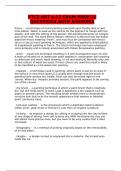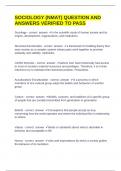Grammar workshop 1
Present simple/Present continuous
Present simple: you use the present simple to talk about habits, facts and that that are always or
usually true. Look at words like: always, every month, each year, generally, never, often, sometimes
Example: He runs everyday, this book has a red color, Bart always bites his nails
Present continuous: you use the present continuous to talk about things which are true only at this
moment or a process which is not completed. Look at words like: at the moment, currently, now,
this month, today, this week
Example: I am reading the newspaper right now, he is laughing at this moment, Cynthia is currently
cycling to school
Present simple Present continuous
He runs everyday He is running.
I read the newspaper everyday I am reading the newspaper right now
He always laughs about these stupid jokes He is laughing at the moment
Cynthia always cycles to school Cynthia is currently cycling to school
Past simple/past continuous
Past simple: you use the past simple when something happened in the past. Time expressions as:
yesterday, ago, last
Past continuous: you use the past continuous when something was in progress at a certain time in
the past. We often use these tenses to show an action interrupting another action
Example: I broke my leg when I was skiing, We were watching television when the power went off.
Time expressions
at + the exact time
I usually wake up at half past six.
in + a period of time
She started working in the morning and left late in the evening.
on + a day I was born on 13th June 1968
He had an amazing party on his birthday.
for + a length of time
I waited for Sarah for two hours.
since + a point in time
I’ve been here since eleven o’clock.
There is no preposition before last, next, this/that day, every, all, whole, yesterday, tomorrow, today.
He arrived from France last night
I have a meeting with him next Monday
, State verbs
Some verbs are only (or mostly) used in simple tenses, and are not used in continuous tenses. An
example of a simple tense is the present simple, or the past simple. An example of a continuous
tense is the present continuous or past continuous. These verbs are called stative, or state verbs. A
verb which isn’t stative is called a dynamic verb, and is usually an action. Often stative verbs are
about liking or disliking something, or about a mental state, not about an action.
Business letters and emails
Geslacht en naam onbekend: Dear Sir/Madam
Naam onbekend: Dear Sir, Dear Madam
Afsluiting: Yours faithfully
Introductie (I would like to inform you about…In response on your email earlier, thank your for ….)
Kern
Sluiting(I look forward to hearing from you soon)
Bijlage: Attached you will find….








